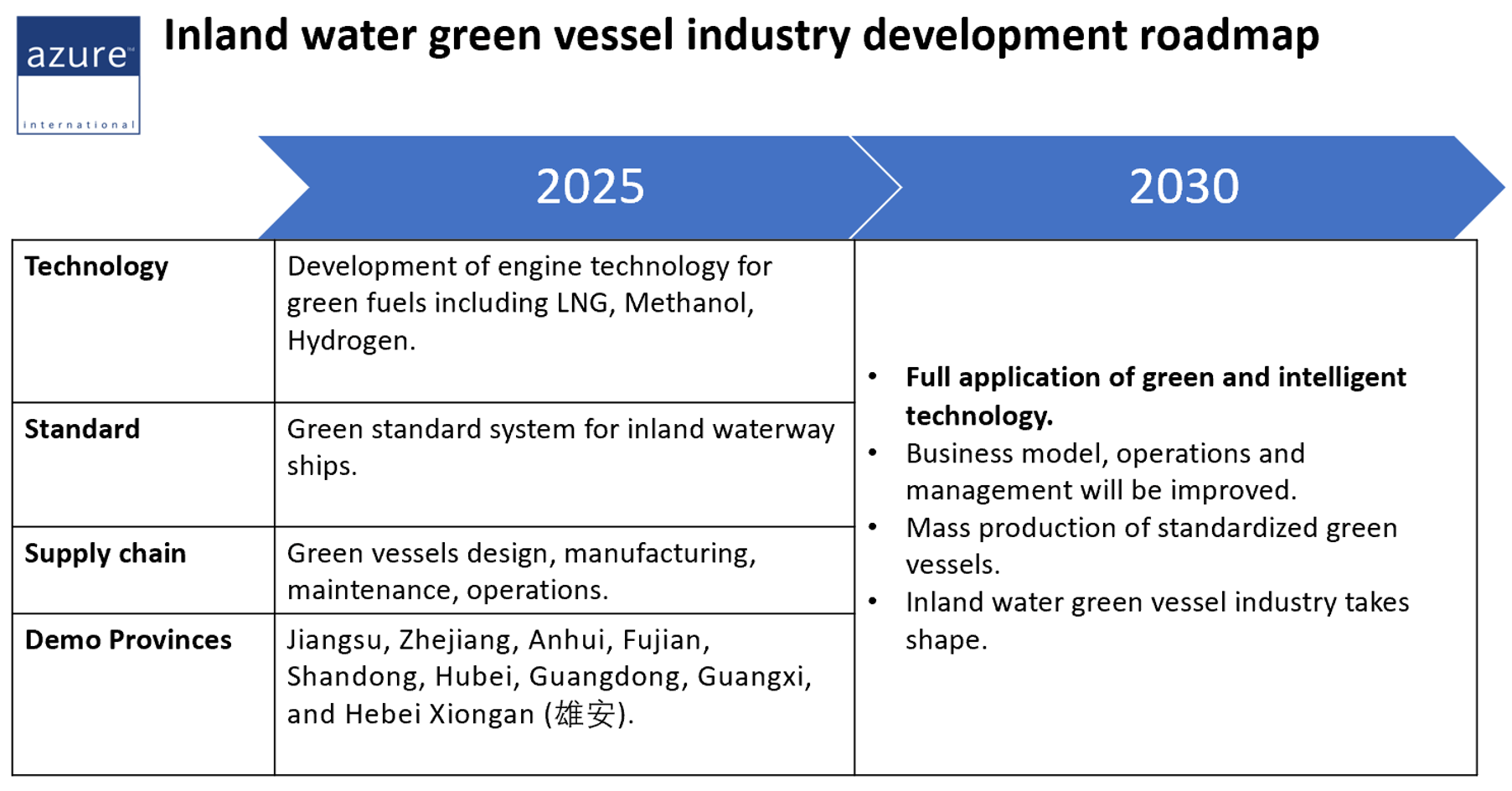The National Development and Reform Commission (NDRC) and four central government ministries – the Ministry of Industry and Information Technology (MIIT), the Ministry of Finance (MoF), the Ministry of Ecology and Environment (MEE), and the Ministry of Transport (MoT), recently jointly issued the Guiding Opinions on Accelerating the Green and Intelligent Development of Inland Waterway Vessels 《关于加快内河船舶绿色智能发展的指导意见》. Inland waterway vessels include ships navigating the waters of China’s domestic rivers and the junction area of rivers and seas, mainly comprising passenger ships, cargo ships, engineering ships, etc.

Specific plans for methanol and hydrogen green fuel vessels:
LNG and electricity:
- LNG powered engine technology upgrade
- Develop hybrid fuel technology (LNG + electricity)
- Accentuate LNG engine application for long-distance voyage vessels with over 2000 tons load capacity.
- Start the R&D and application of battery-switching for cargo ships.
Methanol:
- Speed up the R&D of marine methanol engines
- Improve the power capacity and fuel conversion efficiency of marine methanol fuel cells
- Promote the application of methanol power technology in cargo ships and other applications
Hydrogen:
- Strengthen the R&D of technical equipment such as marine hydrogen fuel cell power systems, hydrogen storage systems, and filling systems
- Explore the application of hydrogen fuel cell power technology in passenger ships and other applications
- Encourage the use of green hydrogen
Inland water shipping, a challenge for Chinese regulators
In 2018, waterways transportation accounted for 23% of China’s transportation sector energy consumption. According to data from the International Energy Agency (IEA), China’s transportation sector energy consumption reached 467 million tons of standard coal equivalent in 2018, accounting for 10.2% of total energy consumption; The transport sector emitted about 1 billion tons of CO2, accounting for about 10.7% of total CO2 emissions, while the waterway transportation sector represented about 2.5% of China’s total CO2 emissions. According to the “Outline for the Development of Inland Waterway Shipping” released by the MoT in 2020, “by 2035, the turnover of inland waterway goods will account for 9% of the total”, “the length of inland waterways that can handle ships over 1000 tons load capacity will reach 25000 km”. Controlling the rising emissions of inland water shipping in the mid-long term is becoming a crucial task for Chinese regulators.


